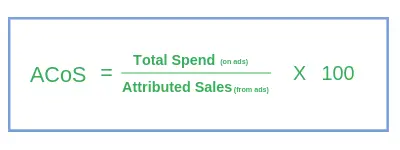01. HOW AMAZON PPC WORKS
Terms | Factors | Advantages
Amazon Pay-Per-Click (PPC) advertising is a method where you pay only for the advertisement that a potential buyer clicks and views the product.
In other words, it is like renting out the outdoor billboard space for free to place your ad but you only pay when a passerby accesses your ad to reach out to your product.
Isn't it wonderful?
Amazon advertising is revolutionary, competitive, cost-effective and an ideal way of advertising your products to reach your shoppers by placing your product ads in the top or within the Amazon SERPs to increase sales in Amazon.
Before we elaborate on Amazon PPC, get a hold of a few terms defined below that are required to understand about Amazon PPC.
A. Basic Terms
- Impression : An impression happens when Amazon shows your product ad on the screen to a shopper.
- Cost-per-click : The cost that will incur when a shopper clicks on your ad.
(Note that, Amazon does not charge for an ad impression but only when a shopper clicks the ad)
- Clicks : The number of times your ad was clicked.
- Ad display Auction : Amazon runs a real-time auction to decide which ads, if any, will appear for that specific search (by a shopper) and in which order those ads will be shown on the page.
The sellers who are eligible and running ads for a particular keyword will bid against each other and win for the placement of an impression.
- Sponsored Products : A powerful cost-per-click advertising solution of Amazon that enables you to promote the products you sell with ads that may appear in highly visible placements on Amazon.
- Sponsored Brands : It increases awareness of your products. The ad creative generally includes a headline, logo, and product images.
- ACoS : An abbreviation for Advertising Cost of Sales and a key metric used to measure performance of your Amazon Sponsored Products or Sponsored Brands campaigns. It is a percentage of direct sales that resulted from your advertising campaign and is calculated by dividing total ad spend by total sales from advertising.
- Spend : How much you spent on clicks for your ad.
- RoAS : Return on advertising spend (RoAS) divides the total sales by the total ad spend (total ad sales/ total ad spend). It is simply an inverse of ACoS, so RoAS = 1/ACoS. Unlike ACoS, it is represented as a number that is interpreted as an index (multiplier) rather than %.
- Attributed Sales : The total product sales generated within one week of clicks on your ads. Your sales data can take up to 48 hours to populate. You can view the individual sales totals for advertised products and other products in the Campaign Performance report
B. Factors to keep in mind
If you are running ads, the other factors you should consider working on to generate sales and profit in total are:
- Well-optimized Product listings - It becomes a futile effort if you run an advertisement in Amazon if your product listings are not attractive or optimized properly. Ads can only get the shopper to the product details page but finally, it is the product listing that induces the sale by a shopper.
- Marketing Budget in tandem with Profit margins - Depending on your business, inventory and profit goals, define your monthly and daily budgets, default bids and always run campaigns with an ACoS goal.The whole structure of your campaigns is defined through your goals and how you would like to generate sales within your budget.
- The product listing is in full-shape with kickstarting reviews that will induce trust to the shoppers visiting the product listing.
C. Advantages of Amazon Advertising
To name a few, running ads through Amazon Advertising helps in
- gaining visibility and product discoverability for the product in a competitive category (really important in the product launch stage),
- building a stronger brand through higher visibility to relevant audience.
- Understand the customers and their shopping behaviour.
- Cross-sell and up-sell using targeted and strategic ad placements within Amazon.
- Helps in creating a brand-recall in the mind of relevant shoppers.
- Drive traffic to the Brand's Storefront enabling incremental sales using strategic objectives like cross-selling, brand defense, promoting higher-priced products, and creating a shopping destination on Amazon that matches the brand's look and feel.
- Re-marketing to high-intent audience
